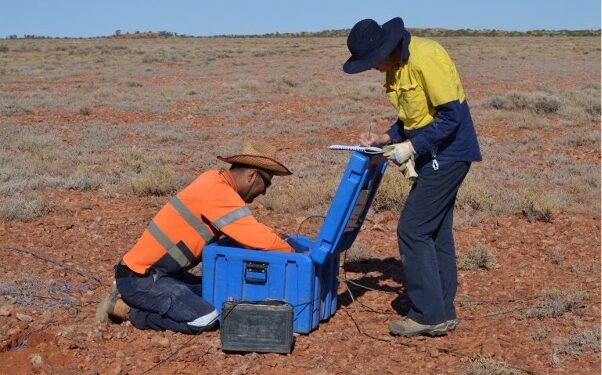Cohiba Minerals Limited (ASX: CHK) has significantly expanded a copper anomaly and confirmed the Horse Well Fault as a high- value target in drilling at the Horse Well Prospect in South Australia.
The latest hole HWDD08 was completed to 1509.9m in mid October 2022 with the drill rig subsequently stranded on site until late November 2022 due to significant rainfall. The hole was designed to follow up on low level but persistent copper mineralization encountered in Gawler Range Volcanics (GRV) in the historic WMC (Western Mining Corporation) hole, HWD1, drilled in June 1982.
Importantly, HWDD08 fulfills many of the preconditions Cohiba is looking for in an IOCG target:
• Structural preparation and the creation of porosity with pervasive brecciation.
• Fluid pathway from deep mantle derived fluids to surface through a major structure.
• Evidence of reduced deep fluid input with magnetite-chalcopyrite-pyrite mineralization.
• Evidence of two fluid mixing with oxidized magnetite-hematite-chalcopyrite-pyrite veins.
• Strength of mineralization with disseminated chalcopyrite-pyrite.
“The Horse Well Prospect continues to provide significant encouragement that we are exploring in exactly the right locations,” Cohiba’s CEO, Andrew Graham, said.
“With persistent low-level copper mineralization, the presence of beneficial structural controls and evidence of desired fluid chemistry and mixing we are convinced that the Horse Well Prospect is a major IOCG target zone. We remain committed to investigating it to the fullest extent possible and applying the best technical rigour to maximise the likelihood of exploration success.”
HWDD08 encountered the newly described ‘Horse Well Fault’, an ENE-WSW striking Reverse Fault dipping steeply to the NNE. Stratigraphic offset over this fault is a minimum of 600m, making this a large fault feature.
The basement geology in the hanging wall of the fault consists of granite-gneiss, sedimentary gneiss, diorite, and a mafic dyke, which is consistent with the geology seen in other holes on the tenement.
The Horse Well Fault and associated breccias are considered to have formed during the timeline of regional IOCG (Iron Ore Copper Gold) deposit formation. This interpretation is based on the breccia textures that mirror those seen in and around other IOCG deposits, and the copper mineralization is exploiting the porosity created by this brecciation event, indicating that brecciation and mineralization occurred at the same time.
For further information please visit: https://www.cohibaminerals.com.au/












